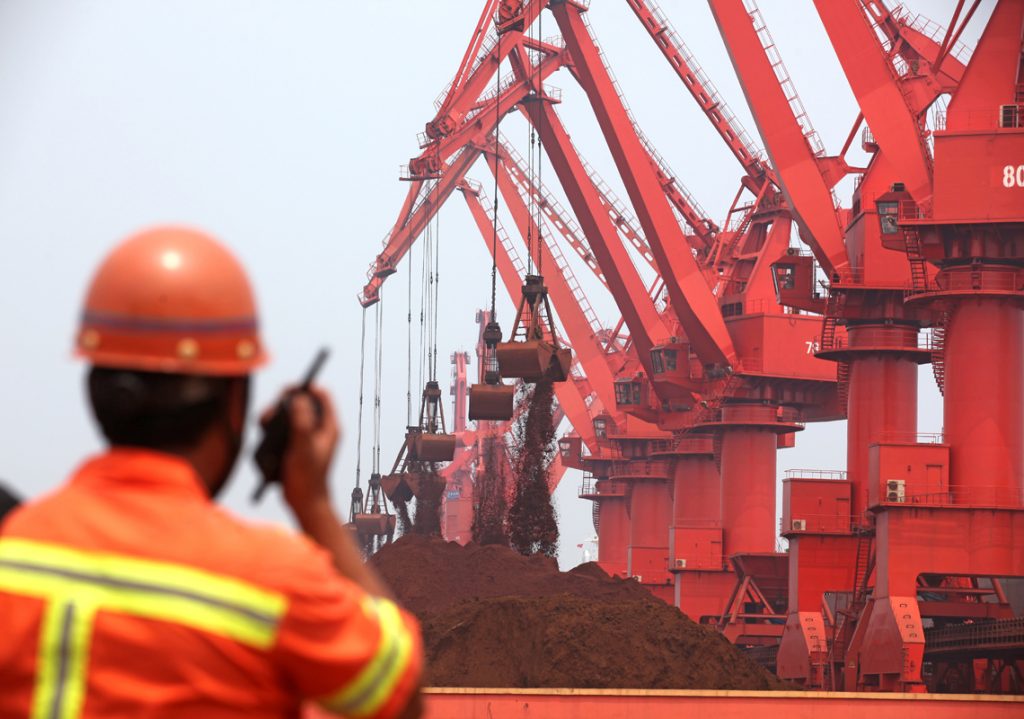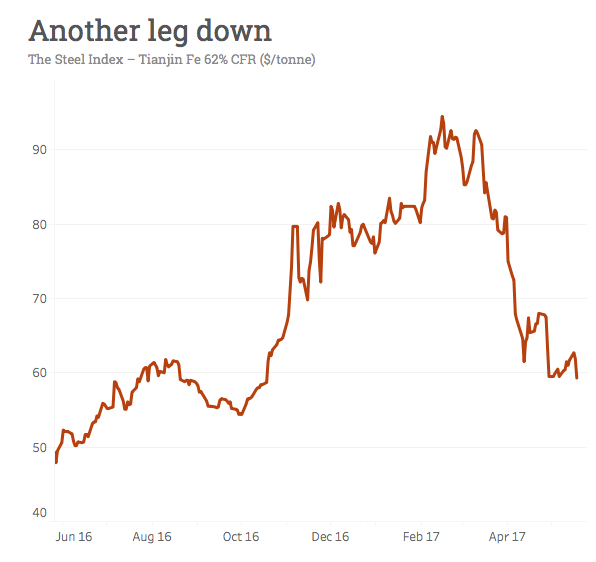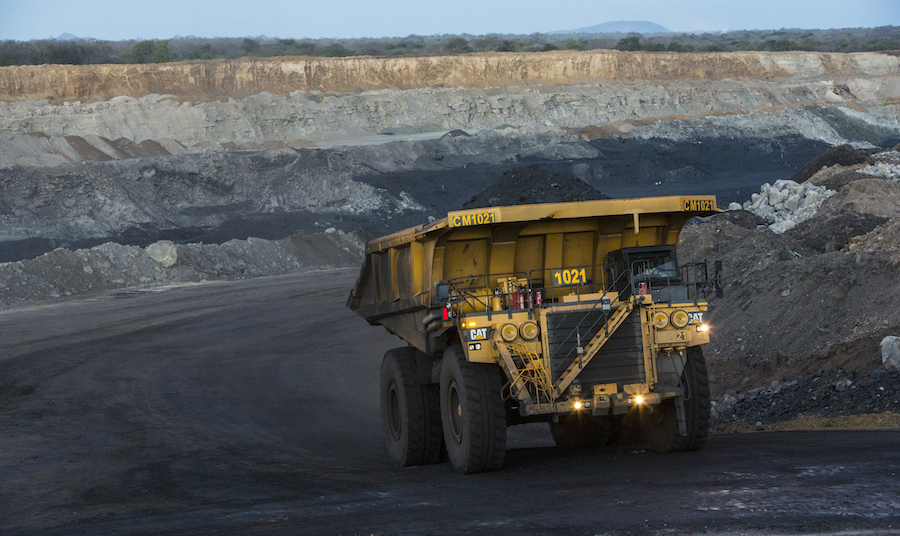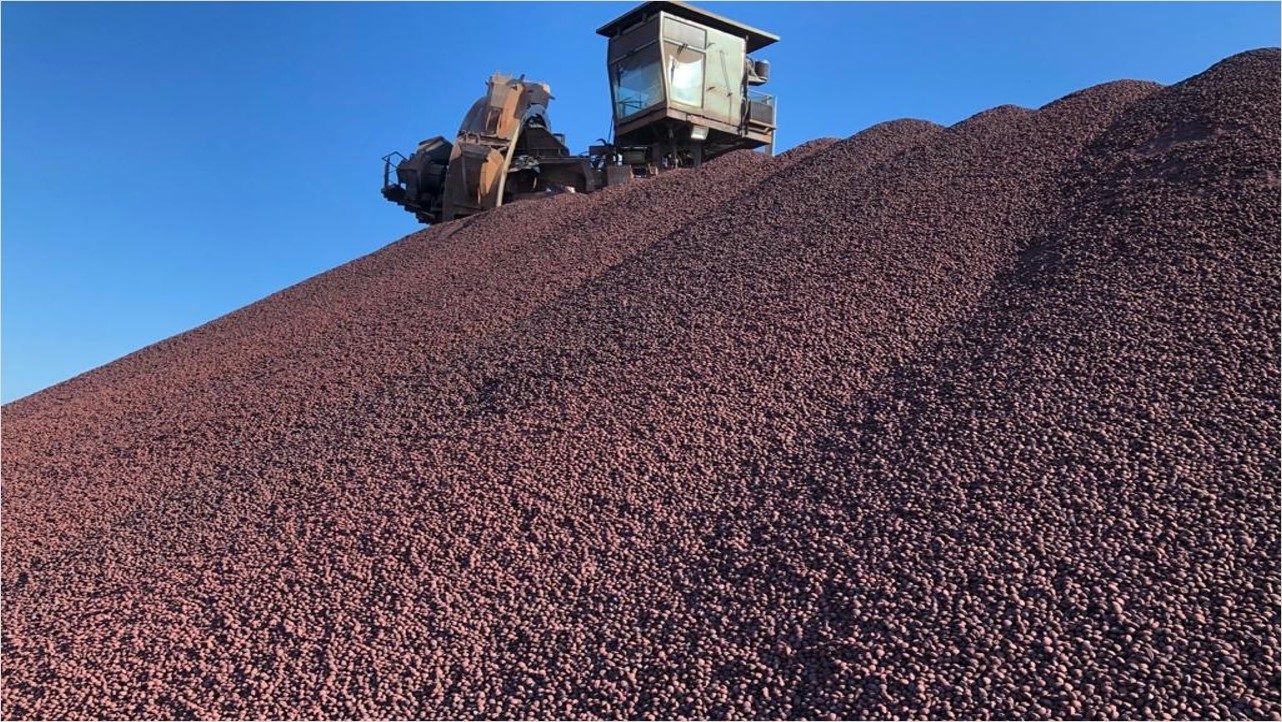Iron ore price drops to 7-month low

After recovering some of the losses suffered at the beginning of May in recent days, the iron ore price turned sharply lower again on Wednesday with a surprise downgrade spooking markets in top consumer China.
The Northern China import price of 62% Fe content ore fell 4.2% to $59.30 per dry metric tonne, the lowest since mid-November according to data supplied by The Steel Index. Benchmark prices are down a whopping 37% from their February highs.
Lower grade ore with 58% iron content declined to $43.80 a tonne, while 65% Fe dipped to $71.50, also a seven month low.
The weakness comes on the back of fresh worries about the health of the Chinese which consumes nearly three-quarters of the world’s seaborne ore.
On Wednesday ratings agency Moody’s downgraded the country’s sovereign debt for the first time since 1989, citing concerns about diminishing returns from Beijing’s debt-fuelled economic stimulus programs and the country’s overheated property and building markets.
 While China’s output of steel reached record daily rates in April, record high stockpiles of nearly 140m tonnes have sparked concern over the actual strength of end-user demand.
While China’s output of steel reached record daily rates in April, record high stockpiles of nearly 140m tonnes have sparked concern over the actual strength of end-user demand.
According to data from Steelhome so far in 2017 inventories at the country’s major ports have risen by just over 2 million, surpassing the 20.8 million added over the whole of last year.
Elevated stocks have not dampened importer enthusiasm however with total imports for the first four month of the year climbing nearly 9% to 353 million tonnes.
Bloomberg quotes Axiom Capital Management’s Gordon Johnson as saying port stockpiles are mainly lower grade and following a recent slump in coking-coal prices, Chinese steelmakers “will probably shift toward this, and away from high-grade material”:
“As this dynamic takes hold, we expect iron ore prices to sharply correct lower,” Johnson said in an email.
Trading at $153 on Thursday premium hard Australian FOB met coal has now halved since hitting a mid-April peak of $314 a tonne according to TSI data. The coking coal correction was expected as exports in Queensland return to normal following cyclone outages.
Scrap supply
Another headwind for iron ore demand is increasing use of scrap in China.
In the past low pig iron prices and little recycling meant scrap did not play much of a part in the domestic industry, especially when compared to places like Europe where steelmakers charge up to around 18% scrap in basic oxygen furnaces (around 20% scrap is a technical limitation).
Platts reports basic oxygen steelmaking plants in China have nearly doubled their use of scrap to as much as 17.5%.
Chinese steel companies are retooling to take advantage of a slump in scrap (typically around 90% Fe content) prices “amid a glut resulting from a nationwide crackdown on induction furnaces, an official at China Baowu Steel Group said this week”:
Assuming output of 700 million mt/year of hot metal, an increase in scrap charge rates to 15% from 9% would see additional hot metal output of 42 million mt, displacing 70 million mt of iron ore, the Baowu official said after the event.
More News
{{ commodity.name }}
{{ post.title }}
{{ post.date }}



Comments